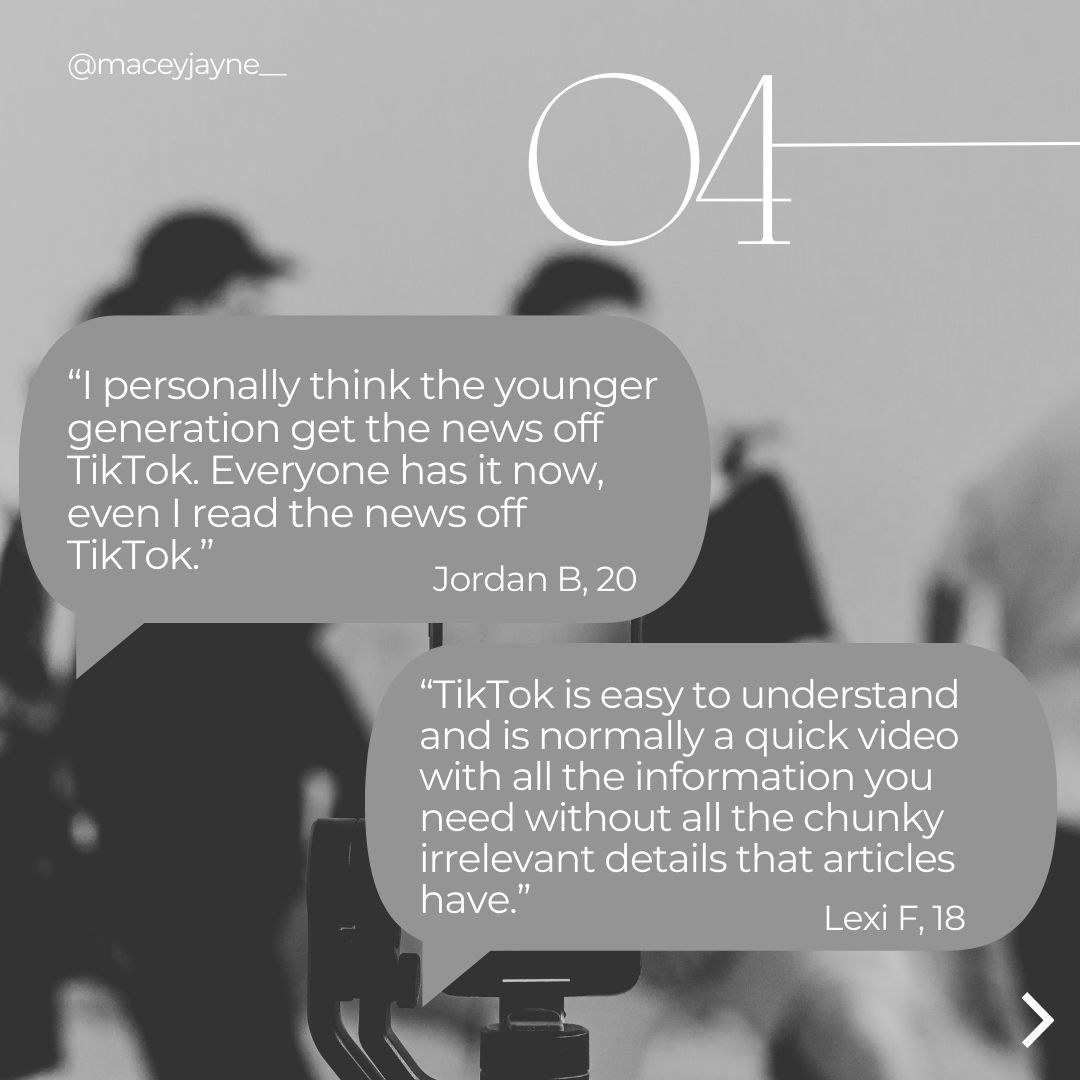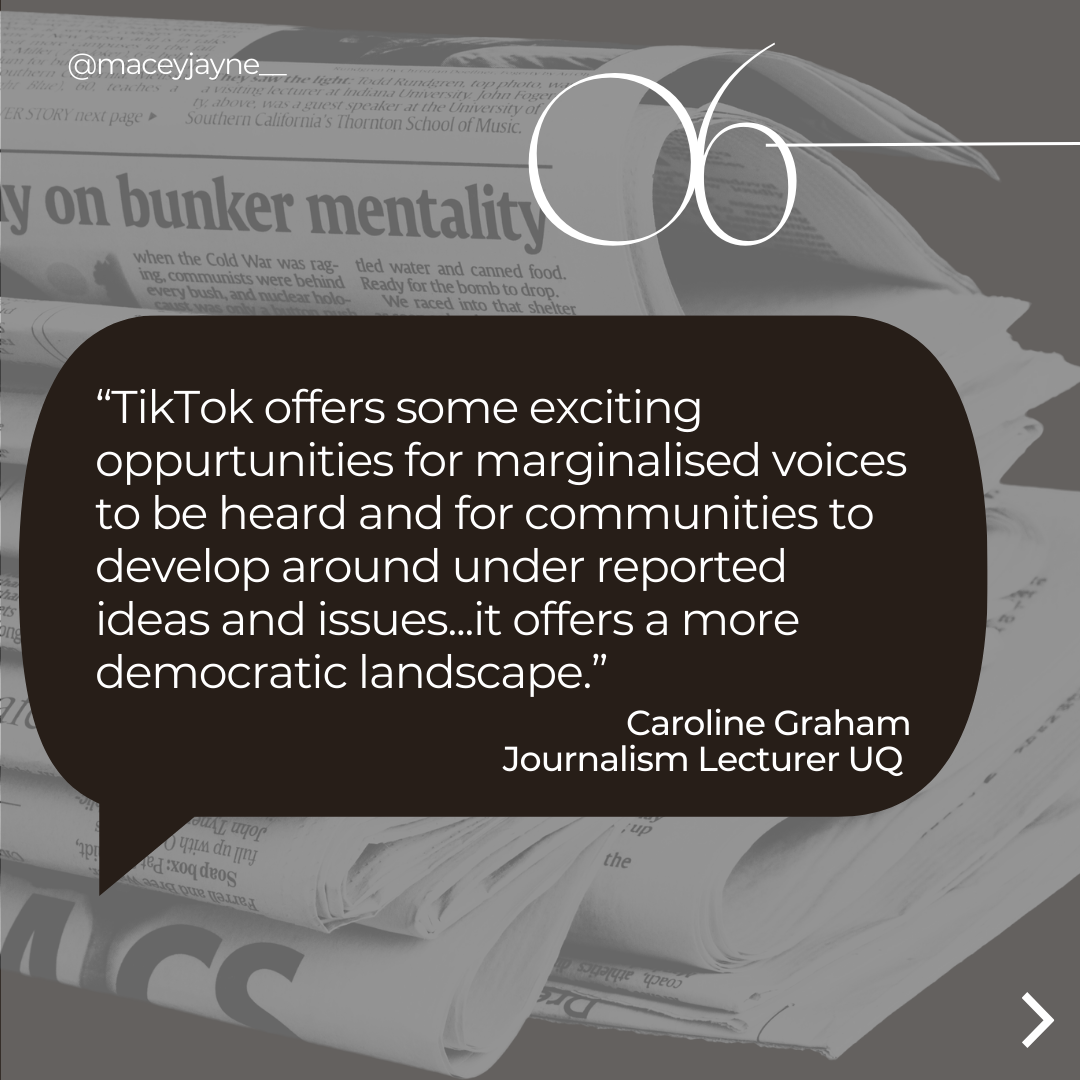










Why Are Younger Generations Relying On Social Media to Read The News?
How Do You Read the News? Part 1 The Statistics and Studies
It’s no surprise that social media is a common walk of life today. From sharing vacation pics, to expressing your opinion to reposting your favourite celeb’s photos, 86% of the world’s population uses social media in some capacity. However:
70% of US adults use it to consume news
20% of Australians use it as their MAIN source of news consumption
17% of Gen Z Australians use TikTok for regular news
40% of Gen Z US citizens use TikTok for regular news
In 2022 Ofcom (UK Office of Communications) found that 3.9 million people use TikTok for news consumption
To put this to the test I asked twenty-five of my followers how they read the news, and 69.7% say they use social media to read the news, with the majority using the platform TikTok.
So why is TikTok seemingly becoming a news platform?
Jordan B, 20 says that “the younger generation get the news off TikTok. Everyone has it now, even I read the news off TikTok” and Lexi F, 18 says “TikTok is easy to understand and is normally a quick video with all the information you need without all the chunky irrelevant details that articles have.”
Pew Research Centre studies have found that people are using TikTok because it is comprehensible, they’re exposed to news relevant to them and quick videos are more engaging.
But is simplicity shortcutting accuracy? Find out in part 2.
How Do You Read the News? Part 2
Is TikTok a News Platform?
With the form of TikTok complexity is simplified into short videos. However, that begs the question – is this accurate?
Traditional journalism often undergoes extensive fact-checking, sourcing and verification. Even then, when things are reported wrong, the institution or individual is held accountable. However, with social media, anyone can produce anything and share it to what could be a billion people (yes you read that right, TikTok has 1 billion users globally).
Nowadays people are choosing “personalities” over established brands. This means @dylanpage.ning who is regarded as the “#1 news account on TikTok’ has double the followers than The Guardian, The New York Times, CNN and Fox News put together.
Digital Journalism Lecturer and Director for EWS at The University of Queensland, Caroline Graham says that there are “clear generational differences in how people consume the news.”
“While older generations have gravitated towards high production standards as a marker of credibility, research shows younger generations find personality and authenticity more credible.”
This means that while our parents and grandparents may rely on traditional news forms such as satellite TV news or daily newspapers which are built off extensive research, experienced journalists and developed institutions, younger generations are happy to scroll on TikTok to get their daily updates.
However, there are concerns for accuracy and objectivity when relying on singular personalities to deliver the news rather than traditional institutions. The Reuters Institute’s Digital News Report 2023 found that 23% of social media users reported seeing misinformation, especially on platforms like TikTok.
Graham shares similar concerns with TikTok’s algorithm which “serves up news that aligns with a person’s niche interests and personal positions.” The format of TikTok is highly personable and tools like the For You Page are “creating new ‘bubbles’ without necessarily offering balance, oppositional opinions or exposure to a broad range of issues.”
For more information on this topic, studies and research that were used in this story are linked in my bio and in the last slide.